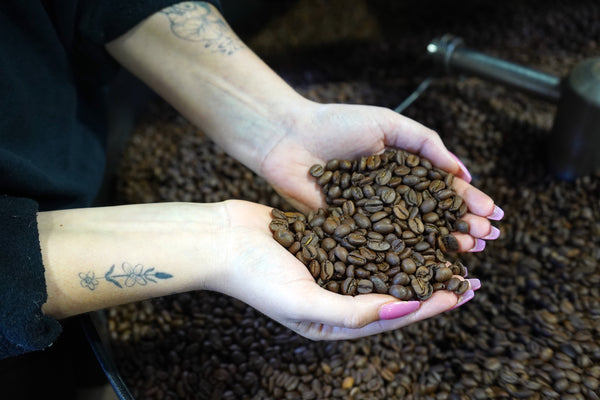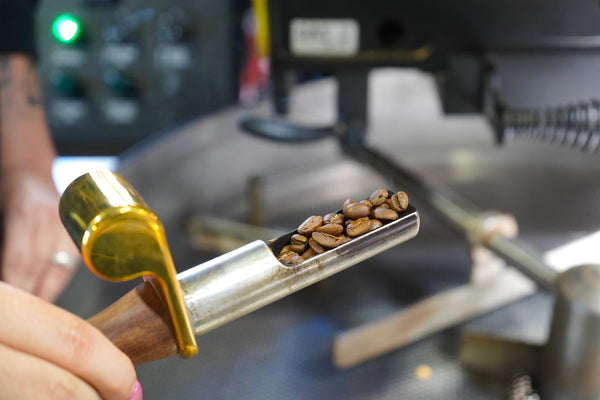What Happens During Roasting
by Dominic Vittitow

Whether from Ethiopia or Colombia, every coffee bean goes through the same chemical magic we call the roast process.
Because of the sheer number of chemical reactions occurring—flavor compounds developing and breaking down and combining in all sorts of ways—it is said that coffee is one of the most complex beverages we consume.

This all takes place in a roughly 10 minute journey, from inedible green (raw) coffee to fresh and ready-to-brew beans. Let’s take a closer look:

When we drop a batch of green coffee into the roaster, we are initiating the first leg of its journey into roasted beans – this leg is called the drying stage.

There is 11-12% moisture content in the raw beans that will be roasted out. It is a simple stage, but a roast-master must be careful not to scorch the beans with an aggressive charge temperature.

Next we have the browning stage; this is where the beans change color from green to yellow, and finally, brown. This browning, and the accompanying fragrance, occurs from the same chemical reaction that happens to baking bread and searing steak: the famous Maillard reaction.

A variety of amino acids are interacting with a variety of reducing sugars, producing a wide range of flavor compounds. This includes melanoidins, which are responsible for a lot of the “coffee flavored coffee” notes as well as the brown color.
Nearing the end of the browning phase we encounter “first crack.” Much like popcorn, the beans have absorbed enough energy to turn the reaction exothermic, expanding with a cracking sound. Caramelization of sugars has started to pick up at this point as the temperature continues to climb.

Soon after the first crack, the beans have made it to the development stage.
While the first stages are important to the overall process with aldehydes, melanoidins, sugars, and amino acids (among other things) laying a formative foundation, this last stage is where the roast-master must make a critical decision: when, or at what final temperature, to drop the roast from the roaster into the cooling tray.

This final time and temperature is an indication of the roast level: light, medium, or dark.

More specifically, beyond 400 degrees, the beans have reached solubility, and from 400 to 460 degrees, the roaster-master’s decision will do any number of things, from preserving volatile compounds, brighter acidities, and nuanced aromatics, to roasting some of those off in favor of a heavier mouthfeel, more chocolate notes, and caramelization. Finally, the roast-master can take it a step further by roasting off the inherent characteristics of the bean for a dark roast style; this will bring out roast-y flavors: burnt chocolate, smokiness, and so forth. A dark roast taken to the 465 degree area will even experience a “second crack” expansion (ever wonder why bags of retail dark roast coffee are bigger than other roasts?).
Whatever the case, each batch of coffee roasted follows a carefully crafted recipe to ensure we get the best out of every bean, be it Ethiopian or Colombian.
What’s your favorite roast style?

